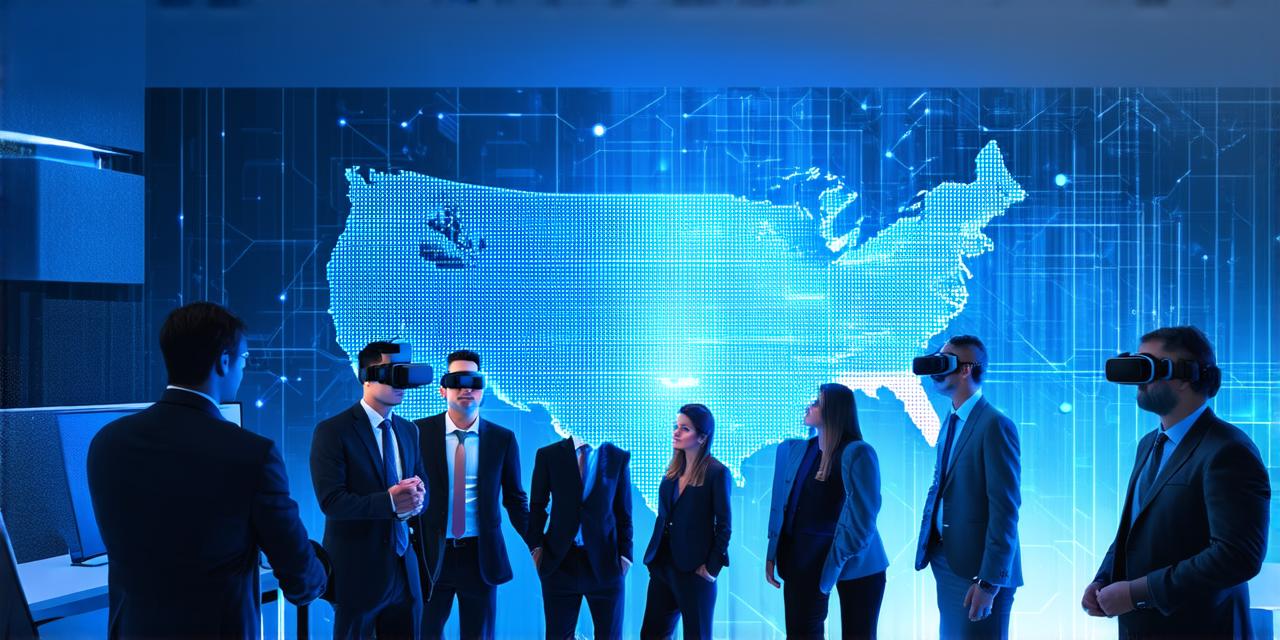Virtual reality (VR) technology is becoming increasingly popular in various industries, including work environments. VR can create an immersive and interactive experience for employees that helps them to work more efficiently and effectively.
Increasing Empathy
Empathy is the ability to understand and share the feelings of others. In the workplace, it is essential to have an empathetic team that can work together effectively. VR technology can help increase empathy by creating a safe and controlled environment where employees can practice being in other people’s shoes.
For example, employees can experience a virtual reality simulation that puts them in the shoes of someone with a different background or disability. This immersive experience helps to create an understanding and appreciation for other perspectives, ultimately leading to increased empathy and inclusivity in the workplace.
Enhancing Communication
Effective communication is crucial for any successful work environment. However, in today’s fast-paced world, employees often struggle to find time to communicate effectively with each other. VR technology can help overcome these challenges by creating a virtual space where employees can interact with one another in real-time.
Employees can use avatars to communicate with colleagues from different parts of the world, allowing for more efficient and effective communication. Additionally, VR can provide real-time feedback on communication skills, helping employees to improve their communication abilities and foster a culture of collaboration.
Improving Diversity and Inclusion Training
Diversity and inclusion training have become essential in today’s workplace. However, traditional training methods often fail to capture the attention of employees and struggle to create lasting change. VR technology can help overcome these challenges by providing an immersive and engaging learning experience.
For example, employees can participate in a virtual reality simulation that simulates different scenarios, such as a workplace conflict or a diverse team meeting. This interactive training experience helps employees to develop critical thinking skills and improve their ability to work with people from different backgrounds.
Real-Life Examples
To further illustrate how VR technology can contribute to creating a more inclusive work environment, let us look at some real-life examples:
- Google’s VR diversity training program
- Walmart’s VR customer service training program
- Unilever’s VR diversity training program
Summary
Virtual reality technology has the potential to revolutionize the way we work and interact with each other. By increasing empathy, enhancing communication, and improving diversity and inclusion training, VR technology can contribute significantly to creating a more inclusive work environment. As VR technology continues to evolve, we can expect to see more companies embracing this innovative technology to improve their workplace cultures and foster inclusivity.
FAQs
1. What is virtual reality technology?
Virtual reality (VR) technology is a computer-generated simulation that creates an immersive and interactive experience for the user. VR technology uses sensors, cameras, and headsets to track the movements of the user and create a realistic virtual environment.
2. How can VR technology increase empathy in the workplace?
VR technology can increase empathy in the workplace by creating a safe and controlled environment where employees can practice being in other people’s shoes. This immersive experience helps to create an understanding and appreciation for other perspectives, ultimately leading to increased empathy and inclusivity in the workplace.
3. How can VR technology enhance communication in the workplace?
VR technology can enhance communication in the workplace by creating a virtual space where employees can interact with one another in real-time. Employees can use avatars to communicate with colleagues from different parts of the world, allowing for more efficient and effective communication. Additionally, VR can provide real-time feedback on communication skills, helping employees to improve their communication abilities and foster a culture of collaboration.
4. How can VR technology improve diversity and inclusion training?
VR technology can improve diversity and inclusion training by providing an immersive and engaging learning experience. For example, employees can participate in a virtual reality simulation that simulates different scenarios, such as a workplace conflict or a diverse team meeting. This interactive training experience helps employees to develop critical thinking skills and improve their ability to work with people from different backgrounds.
5. What are some real-life examples of how VR technology can contribute to creating a more inclusive work environment?
Some real-life examples of how VR technology can contribute to creating a more inclusive work environment include Google’s VR diversity training program, Walmart’s VR customer service training program, and Unilever’s VR diversity training program. These programs use virtual reality simulations to create an immersive and engaging learning experience that helps employees to develop empathy, enhance communication, and improve diversity and inclusion training.
Summary
Virtual reality technology has the potential to revolutionize the way we work and interact with each other. By increasing empathy, enhancing communication, and improving diversity and inclusion training, VR technology can contribute significantly to creating a more inclusive work environment. As VR technology continues to evolve, we can expect to see more companies embracing this innovative technology to improve their workplace cultures and foster inclusivity.
